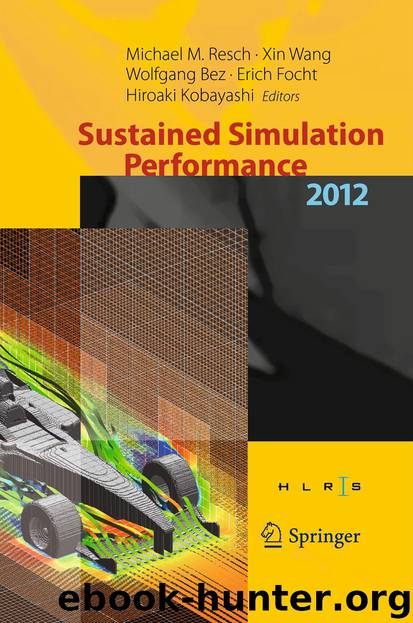Sustained Simulation Performance 2012 by Michael M. Resch Xin Wang Wolfgang Bez Erich Focht & Hiroaki Kobayashi

Author:Michael M. Resch, Xin Wang, Wolfgang Bez, Erich Focht & Hiroaki Kobayashi
Language: eng
Format: epub
Publisher: Springer Berlin Heidelberg, Berlin, Heidelberg
1 Introduction
On March 11, 2011, a massive magnitude 9.0 earthquake, called the 2011 off the Pacific coast of Tohoku earthquake, occurred off the coast of the Tohoku region of Japan. The strong quake hit nationwide from Hokkaido to Kyushu. Also high tsunamis caused by the earthquake struck the Pacific coast of Japan. The earthquake and tsunamis caused a lot of damage to the Tohoku and Kanto regions. Japan has often suffered from natural disasters such as earthquakes and tsunamis.
In 1875, the Japan Meteorological Agency (JMA) was established for the prevention and mitigation of natural disasters, and started its observations of earthquakes and weather. The JMA is the only government agency in Japan for forecasting natural phenomena related to the atmosphere, ocean, and earth, and it operates a number of observatories and weather stations across the country [1]. The JMA operates a seismic network for collecting seismic waveform data and a seismic intensity network for collecting seismic intensity data to monitor earthquakes. Each network comprises about 200 seismometers and about 600 seismic intensity meters throughout the country [2]. Moreover, the JMA uses seismometers and seismic intensity meters operated by local governments, the National Research Institute for Earth Science and Disaster Prevention (NIED), and universities.
The JMA has been using a computer system called the Earthquake Phenomena Observation System (EPOS) to help prevent earthquake and tsunami disasters. The EPOS observes earthquakes and tsunamis and issues Earthquake Early Warnings and Tsunami Warnings to the public as quickly as possible, as shown in Fig. 1. The JMA planned to conduct computerized seismic analysis for reducing warning processing times since 1983, and then developed the systems in 1987. NEC Corporation was contracted to develop its second generation system in 1993, and the EPOS is currently a fourth generation system. An overview of the EPOS is described with its activities around the time of the March 11, 2011 in this paper.
Fig. 1Dissemination of earthquake early warning and tsunami warning
Download
This site does not store any files on its server. We only index and link to content provided by other sites. Please contact the content providers to delete copyright contents if any and email us, we'll remove relevant links or contents immediately.
Algorithms of the Intelligent Web by Haralambos Marmanis;Dmitry Babenko(8522)
Test-Driven Development with Java by Alan Mellor(7407)
Data Augmentation with Python by Duc Haba(7301)
Principles of Data Fabric by Sonia Mezzetta(7049)
Learn Blender Simulations the Right Way by Stephen Pearson(6986)
Microservices with Spring Boot 3 and Spring Cloud by Magnus Larsson(6807)
RPA Solution Architect's Handbook by Sachin Sahgal(6220)
Hadoop in Practice by Alex Holmes(6031)
The Infinite Retina by Robert Scoble Irena Cronin(5918)
Jquery UI in Action : Master the concepts Of Jquery UI: A Step By Step Approach by ANMOL GOYAL(5873)
Big Data Analysis with Python by Ivan Marin(5721)
Life 3.0: Being Human in the Age of Artificial Intelligence by Tegmark Max(5403)
Pretrain Vision and Large Language Models in Python by Emily Webber(4684)
Infrastructure as Code for Beginners by Russ McKendrick(4464)
WordPress Plugin Development Cookbook by Yannick Lefebvre(4195)
Functional Programming in JavaScript by Mantyla Dan(4124)
The Age of Surveillance Capitalism by Shoshana Zuboff(4116)
Embracing Microservices Design by Ovais Mehboob Ahmed Khan Nabil Siddiqui and Timothy Oleson(3983)
Applied Machine Learning for Healthcare and Life Sciences Using AWS by Ujjwal Ratan(3959)
